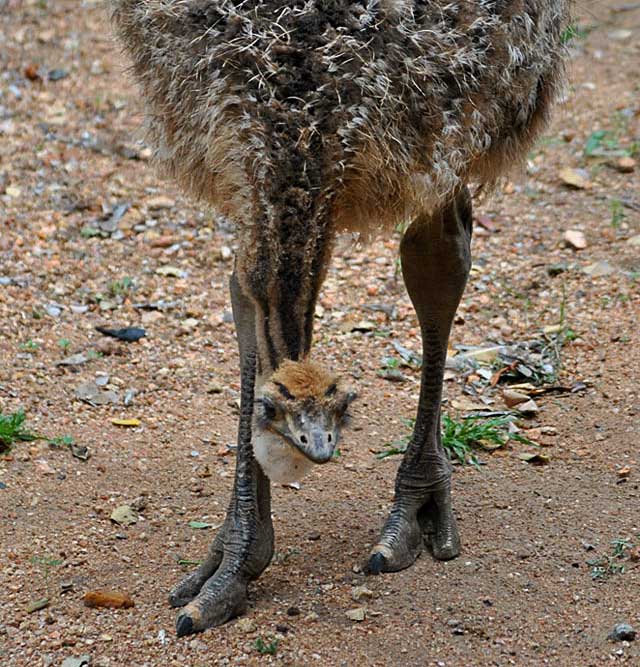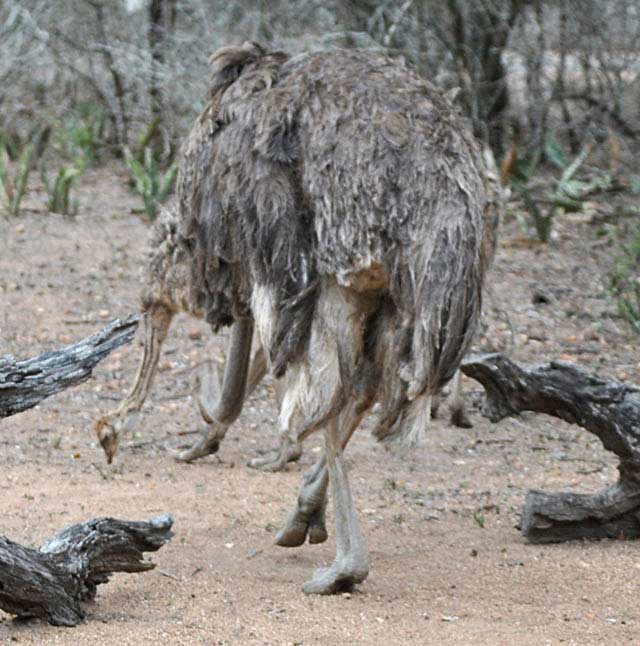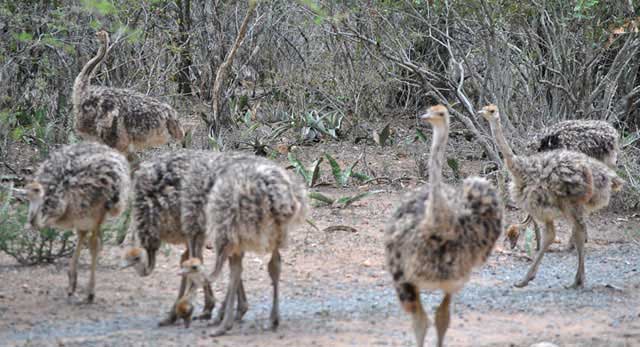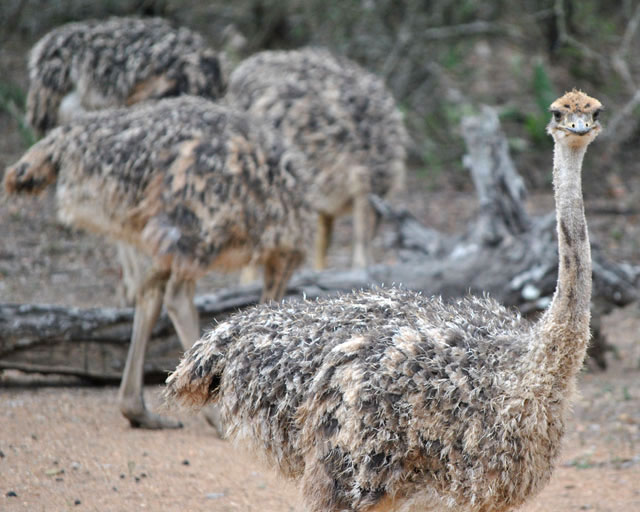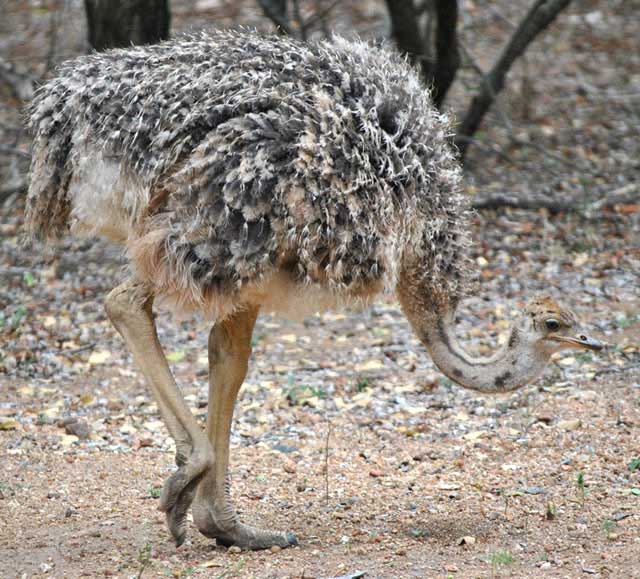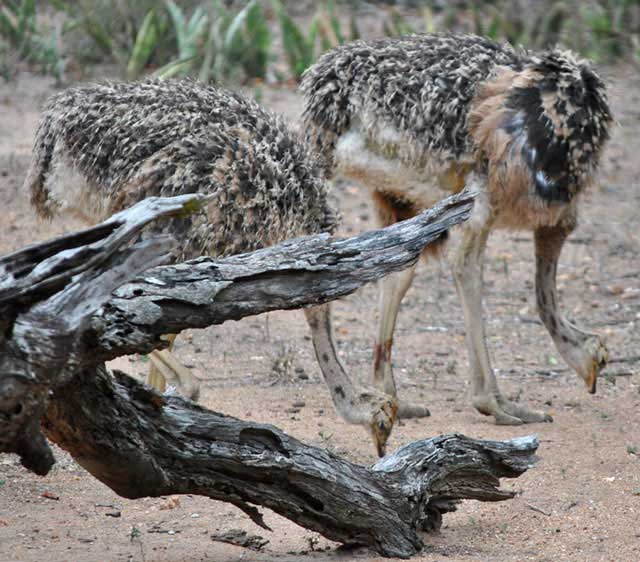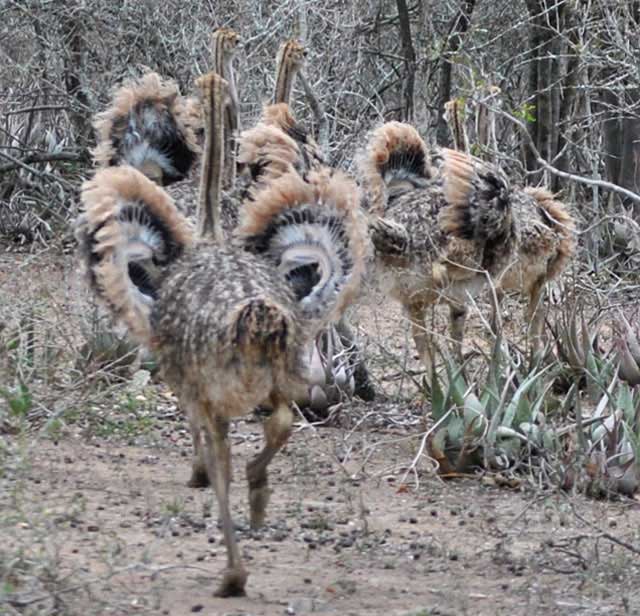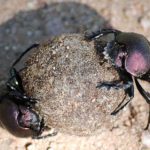Ostrich Babies… No More!
All Chicks That Were Hatched Still Survive
Remember the eight little ostrich chicks? Guess what? They’re growing up! They’re now six weeks older and almost unrecognizable. The big family this little family belongs to, is that of the Common ostrich (Struthio camelus) ours are a sub branch known as (Struthio camelus australis) of Southern Africa.
During their first year, ostrich chicks grow nearly 10 inches (25 cm) a month. They’re already nearly five foot tall (1.52mtr) and by the time these little guys are one year old, they’ll weigh approximately 100 pounds (45 kg)! Rain has dusted the dry patches with new green sprouts and no one has to tell these guys to eat their vegetables.
They’re spending more time out in the open and taking over whole patches of veld, grazing as they go. Every tender shoot in their path is overed up – impressive lawnmower capabilities. Mom and Dad are doing a fabulous job, all eight ostrich chicks look healthy and well fed.
Some Ostrich Facts
Some data you will have read in our previous article on the ostrich and I don’t think it’s futile to say it again. Ostriches can cause serious injury and death with kicks from their powerful legs, slashing victims with the hoof-like nail on the larger, inner toe. The other toe is the smaller outer toe and doesn’t have a nail. Fewer toes mean more speed when running, useful for getting away from predators. And ostriches are seriously fast! They can run at speeds of over 43 mph (70 km/h) and can cover 9.8 to 16.4 feet (3 to 5 m) in a single stride.
With great eyesight, ostriches can see predators like lions from far away. When being pursued by a predator, they can maintain a steady speed of 31 mph, (50 km/h) making them the world’s fastest two-legged animal.
Ostriches mainly feed on seeds, shrubs, grass, fruit and flowers and will occasionally eat insects like locusts. Because they don’t have teeth, they swallow pebbles to grind food in the gizzard and this is why often you will see ostrich chicks with large lumps in their throats.
The female will lay her eggs – usually about twenty – in a single nest, a simple pit scraped in the ground by the male. The eggs are semi-gloss and cream-colored, with thick shells marked by small pits. The female will sit on the eggs by day and by the males by night because the drab female blends in with the sand in the daylight, while the black male is nearly undetectable in the night. The suns heat also plays a big part in this role too. The eggs take about 35 to 45 days to hatch.
The wings reach a span of nearly seven feet (2 m) and are used in mating displays and to shade chicks and the soft and fluffy feathers are wonderful insulation. When ostriches survive to adulthood, they are one of the longest-living bird species and have been known to live over sixty years old, as does the African grey parrot.
Fully grown ostriches stand about nine feet (2.8mt) tall and have the largest eyes of any land vertebrate, about 2 inches (50mm) in diameter, which accounts for their incredible eyesight.
Once a Plentiful Species
Once, there were ostriches everywhere, sub-species existed even in parts of China but like many other, once plentiful wildlife, they’ve disappeared from many places.
- The North African ostrich was common, ranging from Ethiopia and Sudan in the east, through the Sahel to Senegal and Mauritania in the west, and north to Egypt and southern Morocco. Now it only remains in 6 of the 18 countries where it originally occurred, leading some to consider it Critically Endangered.
- Southern ostriches are found south of the rivers Zambezi and Cunene and are farmed for meat, leather and feathers in the Little Karoo area of Cape Province.
- The Masai ostrich from East Africa occurs in southern Kenya, eastern Tanzania and Ethiopia and parts of southern Somalia.
- The Arabian ostrich or Middle Eastern ostrich was formerly very common in the Arabian Peninsula, Syria, and Iraq but became extinct around 1966.
In the African savanna, the ostrich faces a variety of formidable predators including cheetahs, lions, leopards, African hunting dogs, and spotted hyenas. Predators that target nests and ostrich chicks cause the greater damage and these are jackals, birds of prey, warthogs, mongoose and Egyptian vultures.
Like almost every wild species on earth, the wild ostrich population has declined drastically in the last 200 years

